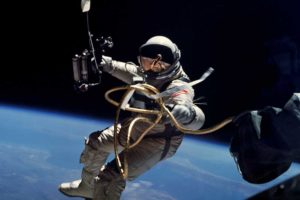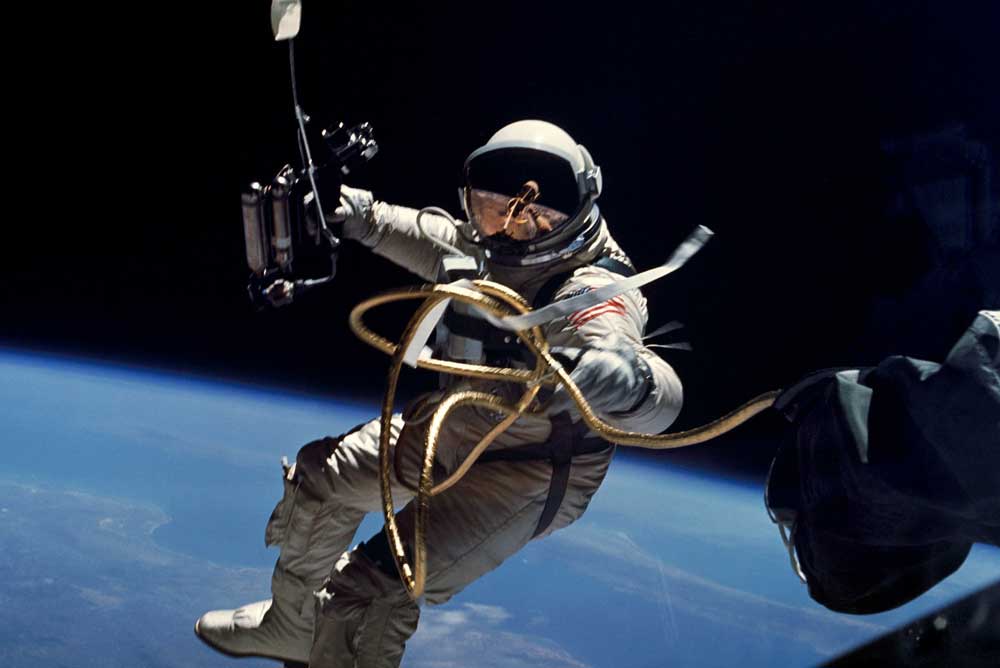Disclaimer: The information on our website is provided for general information purposes only. We make no representations or warranties of any kind, express or implied, about the completeness, accuracy, reliability, suitability or availability with respect to the website or the information contained on our website for any purpose. Any reliance on such information is therefore strictly at your own risk and we are not liable for any damages or losses arising out of or resulting from your reliance on any information contained on our website.
An astronaut travels to an altitude of 50 miles or more for commercial, government, or scientific purposes. In fact, many astronauts will work on the International Space Station (ISS) with other astronauts from around the world. Did you know that an astronaut and a cosmonaut are the same thing? Russians just call astronauts, cosmonauts.
Watch an interview with Astronaut Scott Kelly:
How to Become an Astronaut

Today, you can also become an astronaut for private companies competing in the space tourism industry (these are sometimes called commercial astronauts) or become an astronaut by gaining acceptance into NASAs Astronaut Candidate Program, and completing that training. Next, you must reach an altitude of 50 miles or more to earn your astronaut wings. It’s vital to know that becoming an astronaut is difficult as it is a highly competitive profession with highly qualified applicants competing for the coveted positions.
There are many requirements to become an astronaut for NASA. A formal education is one of those requirements and you may be surprised that they want candidates that are educated in a variety of STEM (science, technology, engineering, or math) disciplines. This is because not all astronauts are pilots, some are science-based astronauts or others brought on the mission to accomplish a particular task. NASA requires a minimum of a bachelor’s degree. Accepted degrees those that are in engineering technology and aviation technology, they also look for those trained formally in the medical profession such as psychologists, exercise physiology, or even nursing. Other degrees in the social sciences count as well such as those trained in archeology, anthropology, and geography.
After earning a degree, NASA has additional basic requirements such as having at least three years experience in your related field. If you are a pilot, they want at least 1,000 of pilot time where you commanded the aircraft. They do substitute some of this experience with education if you carry on to earn your master’s degree or doctorate. Next, you must also pass an astronaut physical and must pass a visual exam though can use glasses. You can learn more from NASAs Astronaut Candidate Program webpage (link opens in a new tab).
According to the Bureau of Labor Statistics, it takes roughly two years to finish the Astronaut Candidate Program if selected and you would learn a variety of skills such as how to survive in the water, robotics, space physiology, medicine, and how to work in a space environment by spending time at locations that simulate space. After that, you would learn how to do your specific role on the mission.
Watch Astronaut Suni Williams give a tour of the International Space Station:
Free Teacher and Student Resources
Teachers: NASA hosts a ton of free resources for teachers on their For Educators webpage. Also, the Swiss Federal Institute offers a free Space Mission Design and Operations course on EdX.org.
Astronaut Interview with Scott Kelly Video Transcript
People sometimes look at, you know, how did you go from this kid to an astronaut. That’s a pretty big step but in reality it’s really a bunch of little steps that build upon each other. My brother and I were explorers at a very young age. Spent a lot of time outside, at the Jersey Shore. As we got older when I went to college I kinda took that to the next level. Went to a merchant marine officer school. We had this 800 foot ship that we would take to Europe every summer. It was a troop and cargo vessel. It did have that kinda romantic aspect to it in that it just reminded me what it must have been like on a sailing vessel hundreds of years ago.
I think operating the vessel, just the kinda the methodology and the attention to detail you needed to do that helped me when I went into the navy. Really helped me do well in flight school which helped me get selected to fly jets. Which then transitioned to fly fighters, the F-14 Tomcat. Later becoming a test pilot and later and astronaut. I’m Scott Kelly and I’m an astronaut.
Article Citations
- Bureau of Labor Statistics, U.S. Department of Labor, Occupational Outlook Handbook, Space careers: A universe of options.
- National Aeronautics and Space Administration, NASA People HR, Astronaut Candidate Program.
- The video on this page is in the public domain from the National Aeronautics and Space Administration (NASA).

